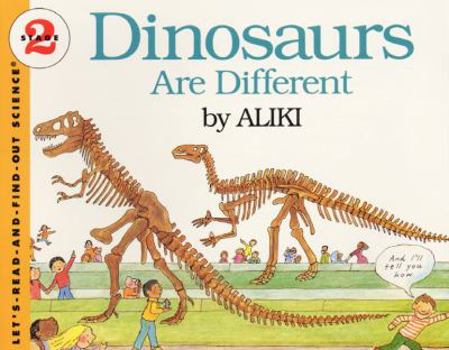Dinosaurs Are Different (Let's-Read-and-Find-Out Science 2)
(Part of the Let's-Read-and-Find-Out Science, Stage 2 Series)
Select Format
Select Condition 
Book Overview
You can learn a lot about dinosaurs by looking at their bones. Some dinosaurs were very small; others were huge. Some had sharp, pointy teeth for eating meat; most plant-eaters had flat, dull teeth. Some dinosaurs' hipbones pointed forward, while other dinosaurs' hipbones pointed backward. There were dinosaurs with bony armor on their backs and others with deadly horns on their heads. Today scientists have divided dinosaurs into separate orders according to their special characteristics. It's easy to see--dinosaurs are different.
This is a Level 2 Let's-Read-and-Find-Out Science title, which means the book explores more challenging concepts for children in the primary grades and supports the Common Core Learning Standards, Next Generation Science Standards, and the Science, Technology, Engineering, and Math (STEM) standards. Let's-Read-and-Find-Out is the winner of the American Association for the Advancement of Science/Subaru Science Books & Films Prize for Outstanding Science Series.
Customer Reviews
Rated 4 starsTake kids to the next level
If your kids are really into dinosaurs, then you know by now that a lot of dinosaur books cover the same ground (e.g. what a fossil is, how it's made, what is a dinosaur). After a while, it gets redundant. But Dinosaurs Are Different takes kids to the next level in their understanding of dinosaurs. More specifically, this book covers the difference between bird-hip dinosaurs and lizard-hip dinosaurs. This is not an easy read...
0Report
Rated 5 starsAnother Aliki winner!
Aliki has a gift for bringing clarity to scientific subjects, and it shows once again in this book. Even (or especially?) children who aren't CRAZY about dinosaurs will enjoy this book. And along the way children will get a thorough exposure to the kind of careful observing and sorting that scientists do. Why not follow the book up with some observing and sorting games?
0Report














